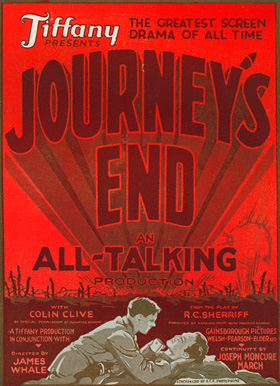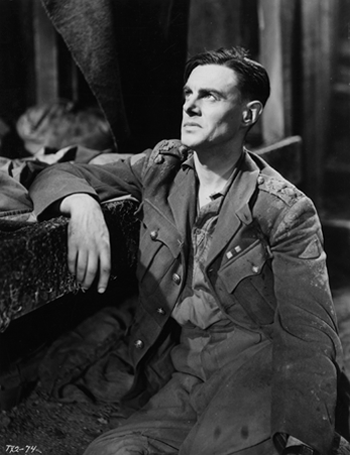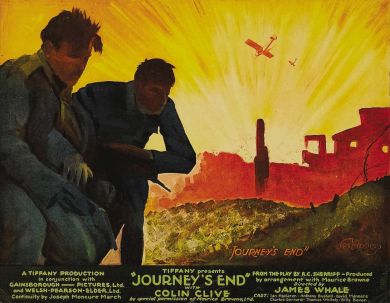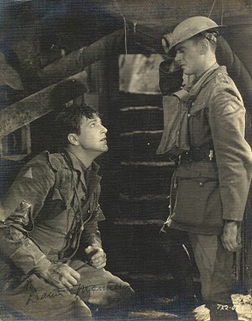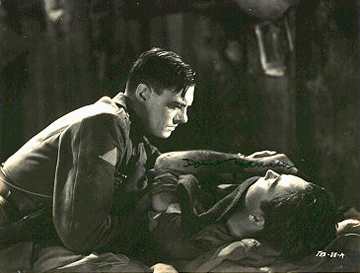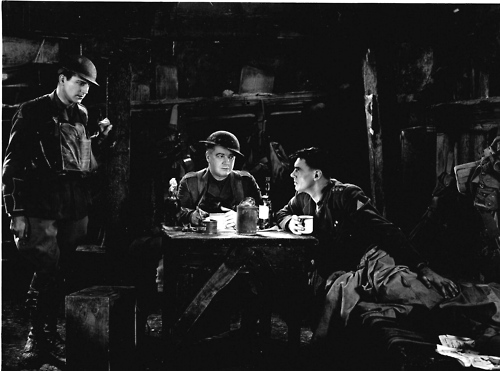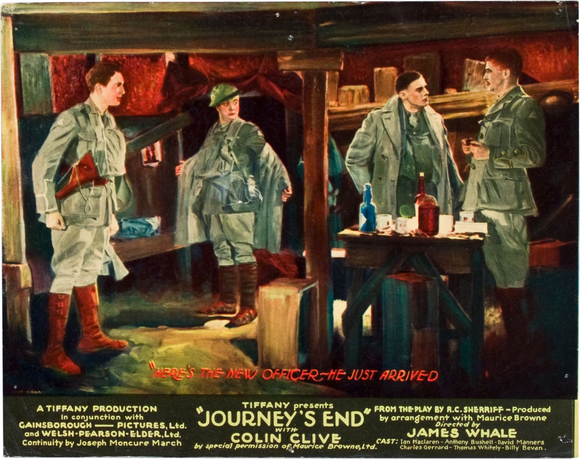Are you up for a quickie? No, not that kind. Wash your brain out with soap, you n’er-do-well. Today I’m tempting you with a quota quickie, a cheaply produced British B movie produced to satisfy English law.
In 1927, the Cinematographic Films Act required British movie theaters to exhibit a certain percentage (it rose to 20%) of British-made films in an attempt to lessen the influence of American culture, pouring into England through Hollywood films, like the Spanish Armada in celluloid form. Well, tempted by the guaranteed opportunity to have their films shown in cinemas, British studios churned out movies with insanely small budgets—about 1 pound per foot of film, according to the UK Guardian.
Rather like Poverty Row films, many of these quota quickies stank like gone-off Vegimite. However, plenty of them also offered burgeoning directors and actors Michael Powell, Errol Flynn, Vivien Leigh, and Ann Todd a chance to cut their teeth on their first cinematic experiences. And, what with necessity being the Queen Mum of invention, many quickies display creative stylistics and wacky plots—to cover up their budgetary shortages.
It breaks my heart to inform you that 60% of these movies are considered lost. But Martin Scorsese and the BFI are actively hunting for them. As it is, more and more of these are available on DVD and hopefully we’ll get a full-on quickie festival someday. Wait, that came out wrong…
So, in my usual roundabout way, I come to today’s sacrifice, The Ghost Camera, a 1933 mystery from debut director Bernard Vorhaus, a talented fellow whose Hollywood career was cut short by the blacklist. This entertaining, plot-packed thriller clocks in at about an hour, a refreshing feat in comparison to the bloated two-going-on-three hours spectacles that are showing at a movie theater near you nowadays.
The story follows John Gray (Henry Kendall), a bespectacled, preening intellectual who arrives home from his vacation to discover that someone dropped a camera in his luggage. Deciding to develop a picture in hopes of returning the camera to its owner, our hero discovers—gasp—a picture of a murder!
Before he can show the image to the police, though, someone nicks it, but leaves the amateur detective with the camera and the remaining undeveloped negatives within. Piqued by the theft and up for an adventure, Gray decides to retrace the photographer’s steps by tracking down the locations where the pictures in the camera were taken. In the process, he meets the camera owner’s troubled sister, Mary Elton, stumbles across a jewel heist, and finally roots out the killer.
As with many quota quickies, The Ghost Camera gives us a glimpse into the before-they-were-famous careers of big names in cinema history. A charmingly baby-faced Ida Lupino graces the screen with her discreet magnetism as Mary, the lady in distress. As she accompanies the sleuth, she both seeks and dreads the truth about her brother and his camera.
Unfortunately, the print of this film available on YouTube looks like it was strained through cheesecloth (which is why I didn’t pepper this post with screencaps). Nevertheless, the cinematography does shine. The director of photography, Oscar-winner Ernest Palmer, an American, shot the melodically lovely Borzage films Street Angel and Seventh Heaven, so it’s no surprise that he pulls out some bizarre visual poetry even for this cheapie. The scenes in the darkroom, almost total blackness except for a few starkly-lit faces, convey a spooky sense of dread that foreshadows the virtuoso lighting contrasts of mature British noir. Again, when the protagonist investigates an abandoned, ruined fortress, darkness prevails, plunging us viewers into a situation where we must stay riveted to the screen for the slightest flash of light or sound to know what’s going on.
Best of all, the great David Lean earned one of his first screen credits on this film as an editor. He later acknowledged director Bernard Vorhaus as a formative influence on his career. Indeed, combined with the cinematography, the editing here can only be described as audacious. For example, the movie starts with a low angle shot of a looming castle keep. The camera slowly tilts down and pans to a car on the road. Jump cut to the vine-covered walls of the ruin. Jump cut to the backseat of the car into which a camera tumbles. Where did it come from? Who dropped or threw it? Did the car pick it up on purpose or is the driver totally unaware? This pre-credit sequence leaves us intrigued, tantalized. Exactly what you desire from a mystery thriller!
The first time I watched The Ghost Camera, its visual flamboyance stunned me. Shaky handheld motions, jump cuts, swish pans, and disorienting shifts of focus: you’ll see a lot of things here that we tend to associate with the “groundbreaking” movies of mature European art cinema, especially French New Wave. The jarring, unstable camerawork also awakens the audience to the foibles and strangeness of mechanical recording. That is, we realize that we’re watching a movie, a reality filtered through a camera.
The camera as a recording instrument itself carries an uncanny aura. Think about how many meta-thrillers and horror films revolve around some variation of a ghostly, anxiety-inducing camera or pictures: The Big Sleep, Blow-Up, Chinatown, and The Eyes of Laura Mars, to name a few. The Ghost Camera actually amplifies its slapdash, B-movie discontinuity, its jerky camera movements and warping perspective, to generate fear. The movie camera takes on a life of its own. Meanwhile, the film’s plot, in which developed images serve as clues, shows us how photography’s special bond with reality can bear an alarming witness.
The camera’s truth speaks in tongues, though—as the weird, vertiginous cinematography of The Ghost Camera suggests—that need to be interpreted by human reasoning.
Mix all this innovative flair and love for the filmic medium with a droll script, really a parody of the whodunit, and you have a beguiling hour’s entertainment. Our mewling hero John Gray continuously treats us to his pessimistic, helpless commentaries. For instance,
“I really don’t know why I continue to go on holidays, Simms. They’re never adventurous. Just the usual people and happenings, unexciting, like myself. Man is an irrational animal, Simms, persisting to hope for what his reason has proven nonexistent.”
At another vexing moment, he humorously exclaims, “Oh but this is absurd! We’re beginning to talk like characters in a mystery melodrama.” If only he knew…
So, watch The Ghost Camera and celebrate this testament to what wonderful popular art a bunch of clever people can cobble together out of basically nothing. It’s certainly one of the most enduring and satisfying quickies you’ll ever enjoy. Click here to watch the film on YouTube.
N.B. I learned about the history of the quota quickie from these thoughtful sources. I didn’t pull those facts out of thin air and I gratefully and fully acknowledge these articles and their authors for their research and insights. I’m citing them informally, because this is a blog post, not a college paper!
“Fancy a Quickie?” by Matthew Sweet from U.K. Guardian Monday, 1 January 2007.
“In Praise of the Quota.” at British Pictures Article Archive.


































